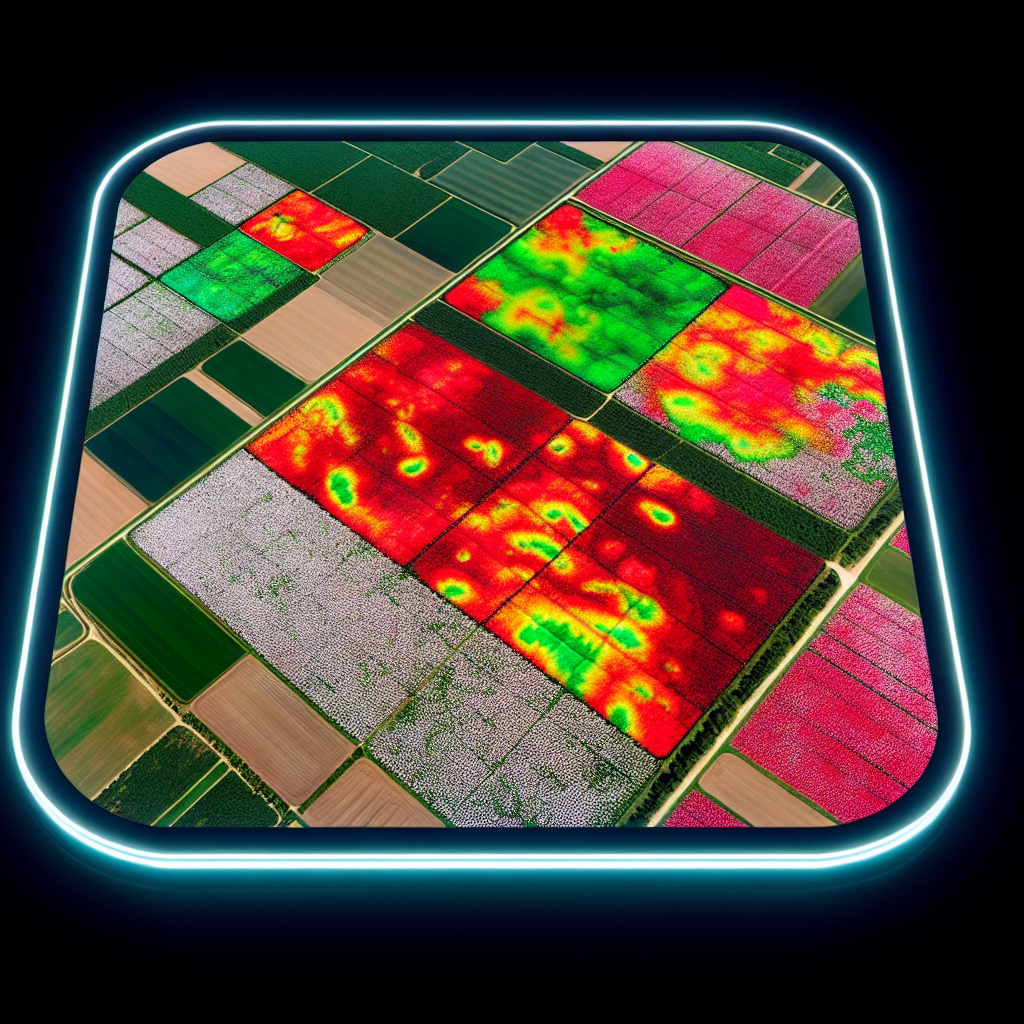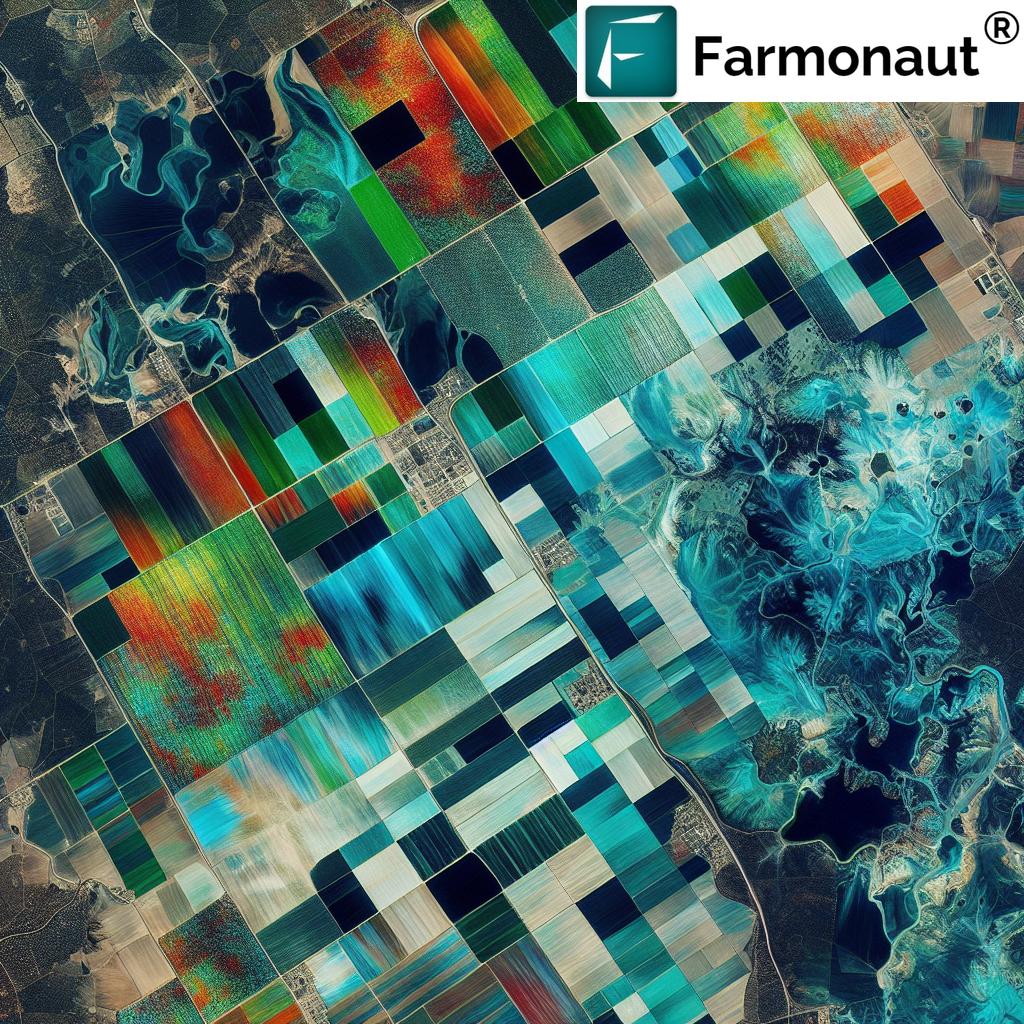French Drain Installation: 7 Ways to Boost Yields
Introduction
Agricultural drainage systems play a crucial role in modern farming and forestry, with French drain installation standing out as a transformative practice for managing excess water in fields, preventing soil erosion, and improving crop yields. As weather patterns grow more unpredictable, and with certain regions such as Alberta facing intense rainfall and waterlogging, efficient drainage solutions have become a necessity for both smallholders and large-scale operations alike.
The concept of the French drain — also known as a trench drain, weeping tile, or subsurface drainage system — has its roots in the 19th century, yet remains as relevant as ever. When properly designed and implemented, it offers far-reaching benefits: safeguarding soil structure, promoting healthy root development, and minimizing water-related crop losses. This comprehensive guide will explore the significance, workings, and impact of French drain installation in farming, using proven methods to achieve sustainable water management in agriculture and forestry.
Primary Focus Keyword: French drain installation
Secondary Keywords: agricultural drainage systems, managing excess water in fields, preventing soil erosion, improving crop yields, sustainable water management in farming
A French drain is a highly effective subsurface drainage system designed to redirect surface water and groundwater away from targeted areas. This method, essential in agriculture and forestry, plays a key role in preventing soil erosion, managing excess water, and boosting agricultural productivity.
The Historical Background and Evolution of French Drains
To fully appreciate the value of French drain installation in modern agriculture, it’s worth tracing its origins. The term “French drain” doesn’t actually refer to France, but to Henry F. French, an American lawyer and agricultural advocate. In his influential 1859 book, “Farm Drainage,” French outlined techniques using simple, perforated clay pipes laid in trenches, surrounded by gravel, to facilitate water movement away from waterlogged fields. (Source)
This innovation came at a crucial time, as North American farmers grappled with excessive rainfall and the accompanying risks of soil erosion, waterlogging, and loss of crop yields. Over time, the basic principles of French drains have evolved, embracing modern materials, geotextile fabrics, and even data-driven design, but the core concept remains unchanged: efficiently moving water away from areas where it poses a threat to soil health and productivity.
Key Benefits of French Drain Systems Highlighted Since the 19th Century
- Mitigating waterlogging in agricultural fields
- Enhancing soil structure for optimal root development
- Reducing soil erosion and nutrient loss during heavy rains
- Protecting infrastructure like farm roads and forestry trails from water damage
The Importance of Agricultural Drainage Systems in Agriculture and Forestry
French drain installation is at the heart of effective agricultural drainage systems. Excess water in farming regions such as Alberta, Canada, or the rain-prone Midwest U.S., can cause devastating losses, including yield reduction, poor soil conditions, and infrastructure damage.
Let’s break down why these systems are so invaluable:
- Enhancing Soil Structure: By preventing waterlogging and ensuring optimal soil aeration, French drains promote healthy root development, making sure that crops can access both nutrients and oxygen.
- Preventing Soil Erosion: Efficient drainage solutions minimize surface runoff. This is crucial for preventing soil erosion and subsequent nutrient loss, which is especially important in areas prone to heavy rain.
- Improving Crop Yields: Effective water management practices through proper drain design allow farmers to increase yields by up to 20%, especially in flood-prone fields (as research in Alberta has shown).
- Protecting Infrastructure: Beyond just crop production, French drains protect farm roads, forestry trails, and other infrastructure by channeling water away from vulnerable surfaces, reducing maintenance costs and preserving investments.
With modern farm management solutions like satellite-based soil and crop monitoring (see Farmonaut’s precision agriculture platform), we can now precisely identify areas prone to waterlogging and tailor French drain installation for maximum impact.
French Drain Installation: 7 Ways to Boost Yields
Let’s explore seven specific ways French drain installation delivers substantial yield and sustainability benefits for farms, fields, and forestry areas:
-
1. Reducing Waterlogging in Farmland
Waterlogged conditions limit root development and deprive plants of vital oxygen. French drains efficiently remove excess water, keeping soil moisture within optimal range and facilitating deeper, healthier root growth—essential for improving crop yields.
-
2. Preventing Soil Erosion and Nutrient Loss
By channeling rainwater into subsurface pipes and gravel trenches, we reduce the speed and volume of surface runoff. This means fewer nutrients are washed away, and the soil structure is preserved for long-term fertility—vital for sustainable field management.
-
3. Enhancing Soil Health in Agriculture
Optimal aeration, assured by French drains, helps maintain a thriving soil biology, supports beneficial microbes, and promotes healthier crop development. This foundation guarantees productive growing seasons year after year.
-
4. Increasing Planting Windows
Efficient drainage allows fields to dry and warm faster after rains or snowmelt. This extends the planting window, empowering farmers to sow earlier in spring or resume operations soon after storms—a key factor in boosting annual yields.
-
5. Protecting Critical Farm and Forestry Infrastructure
Farm roads, machinery paths, and forestry access trails often deteriorate from standing water and repeated flooding. Specialized French drain designs divert water away from these sensitive areas, minimizing costly repairs and interruptions to farm operations.
-
6. Supporting Innovative Water Management and Precision Farming
Integrating French drains with digital management platforms (such as those offered by Farmonaut), crop health sensors, and weather forecasting makes it possible to diagnose water problems faster, target installation more effectively, and continuously monitor drainage system performance.
Explore Farmonaut’s Large-Scale Farm Management: Highly beneficial for coordinating field-level drainage planning, yield mapping, and increasing the efficiency of French drain installations!
-
7. Ensuring Resilience Against Climate Change and Extreme Weather
As climate volatility increases, so do unpredictable downpours and droughts. Properly installed French drains help buffer these shocks, providing a stable foundation for consistent yields even during extreme growing conditions.
Design and Installation of a French Drain: Step-by-Step Guide
A properly designed and installed French drain can operate efficiently for decades. Here’s a detailed roadmap to effective installation in agricultural and forestry settings:
Key Steps in French Drain Installation
- Site Assessment: Identify areas prone to water accumulation. Tools like Farmonaut’s satellite crop health monitoring can help detect waterlogged patches and plan optimal drain placement.
- Trench Excavation: Dig a trench following the planned path—typically 12–18 inches wide and 18–24 inches deep.
- Adding a Gravel Layer: Place a layer of clean, coarse gravel (about 2–3 inches deep) at the bottom. The gravel layer facilitates water movement into the pipe and increases long-term drainage efficiency.
- Installing the Perforated Pipe: Lay a perforated pipe on top of the gravel, ensuring a gradual slope (about 1–2%) to promote gravity-driven flow away from the field or road.
- Encasing Pipe with More Gravel: Surround the pipe with additional gravel, leaving about 2–3 inches from the top of the trench.
- Applying a Geotextile Fabric: Cover the trench with a high-quality geotextile fabric. This prevents soil intrusion and clogging, ensuring the longevity of your drainage system.
- Backfilling and Surface Restoration: Fill the remaining space with soil, keeping the trench slightly crowned, so surface water always drains away from the field or infrastructure.
Pro Tip: Always keep a minimum of 50 feet clearance from trees with aggressive roots (willow, elm, maple). Tree roots searching for water can eventually invade and block your perforated pipes!
Material Checklist for Effective Subsurface Drainage Installation
- Perforated plastic or clay pipes (4–6 inches diameter for most field applications)
- Clean washed gravel or crushed stone (¾ – 1½ inch)
- Geotextile fabric (for preventing sediment/clay intrusion into the pipe)
- Extras: Shovels, trenchers, pipe slope gauges, and rodent guard for outlets
Best Practices for Optimizing French Drain Performance
- Ensure continuous pipe slope (from source to outlet) for gravity drainage
- Cross-check with field elevation maps (digital or satellite-based systems enhance accuracy)
- Never use fine sand or silt as fill (they block the system quickly)
- Inspect outlet locations before each rainy season
For digital crop monitoring and yield forecasting, integrating with Farmonaut’s real-time crop health platform offers constant oversight, allowing timely maintenance and maximizing the return on your drainage investments.
Drainage System Maintenance: Keeping French Drains Effective
Drainage system maintenance is essential for the lasting efficiency of any French drain. Even the best-designed systems require routine checkups to ensure water keeps flowing freely and farmland or forestry infrastructure stays protected.
Key Maintenance Guidelines for French Drains
- Clear Inlet and Outlet Debris: Regularly inspect visible ends of the system. Leaves, sticks, or mud deposits can block pipes and reduce capacity.
- Flush the System Seasonally: Use water pressure to wash away sediment or biofilm that may have built up in the perforated pipe.
- Check for Animal or Root Intrusions: Install flap gates or guards to keep rodents out. Inspect sections near tree lines for early signs of root intrusion.
- Monitor Surface Grades: Ensure settling or erosion hasn’t created low spots where water might pool again.
- Document All Repairs: Keep a log of maintenance and issues using digital farm tools. Platforms like Farmonaut can track site changes, water stress, and spot potential drainage problems over time using satellite data.
Timely maintenance not only prevents system failure and field flooding but also protects yields and saves long-term costs—making it a vital part of sustainable water management in farming.
Comparative Impact Table: Before & After French Drain Installation
The table below provides a comparative look at the quantitative impact of French drain installation on key agricultural productivity factors. Estimated values are based on field data and published research from rain-prone agricultural zones such as Alberta and the U.S. Midwest.
| Scenario | Yield Increase (%) | Soil Erosion Reduction (%) | Waterlogging Incidence (Per Season) | Drainage Efficiency Rating (1 – 10) |
|---|---|---|---|---|
| Before French Drain | 0 | 0 | 3–4 | 3 |
| After French Drain | 15–22 | 35–50 | 0–1 | 9–10 |
As seen above, drainage efficiency (rated on a scale of 1–10), incidence of damaging waterlogging, and overall improvements in yields and erosion reduction are all markedly improved post-installation. These gains are achievable when combining best practices in French drain design with robust digital farm data for ongoing monitoring.
Environmental Considerations of Subsurface Drainage Solutions
While the benefits of French drains are substantial, their installation and long-term use have environmental impacts that require awareness and mitigation:
- Nutrient Leaching: Draining excess water can lead to nitrate-nitrogen and phosphorus being carried off site. In high-drainage zones, this may impact local waterways, causing pollution or algal blooms. Source
- Loss of Wetland Habitat: Extensive subsurface drainage, particularly in prairie or lowland regions, can dry out wetlands important for birds and wildlife.
- Ecosystem Imbalance: Altering water tables can change surrounding ecosystems, possibly increasing invasive species or reducing beneficial native plants.
Sustainable water management in farming means balancing crop gains with prudent stewardship of the environment. Controlled drainage, buffer strips, and data-driven irrigation help mitigate any negative externalities.
Interested in tracking your own operation’s carbon footprint and impact? Check out
Farmonaut’s Carbon Footprinting product—it supports farmers in quantifying emissions related to water usage and drainage system upgrades while assisting with environmental compliance.
Role of Precision Agriculture and Satellite Monitoring
The success of French drain installation in modern agriculture can be greatly enhanced through digital precision tools. Here’s how:
- Identify Problem Areas Remotely: Farmonaut’s satellite crop health monitoring reveals zones of recurring water stress or ponding, allowing for targeted drain placement and faster problem diagnosis.
- Precision Installation Planning: Field-level imagery and digital terrain models (available in Farmonaut’s platform) help optimize the placement of trenches and pipes for best performance.
- Post-Installation Impact Assessment: Satellite and AI-powered analytics from Farmonaut can track vegetation health, monitor for new water accumulation, and confirm if soil conditions are improving season after season.
- Resource Efficiency: Use Farmonaut’s Fleet Management module to efficiently coordinate machinery for large-scale drainage installation, maintenance, or repairs.
By leveraging these digital innovations, we empower farmers, cooperatives, and agribusinesses to adopt best-in-class French drain practices rapidly and cost-effectively.
API and Advanced Integrations
Developers and agritech businesses can integrate satellite crop/soil/moisture data into their own drainage management systems using Farmonaut’s API.
Access here: Farmonaut API | Developer Docs: API Developer Docs
Farmonaut Subscription Plans for Digital Farm Management
Frequently Asked Questions (FAQ)
Q1: What is a French drain and how does it work in agriculture?
A French drain is a subsurface drainage system that uses a trench, gravel, and perforated pipe to reroute surface and subsurface water away from fields or infrastructure. By collecting and channeling water, it prevents waterlogging, soil erosion, and crop damage, making it invaluable for farms, forestry areas, and any landscape prone to excess moisture.
Q2: How deep and wide should I make my French drain for field installation?
Standard agricultural French drains are 12–18 inches wide and 18–24 inches deep. Adjust based on soil type, crop requirements, and the volume of water to be managed.
Q3: Can I use French drains in forestry or road protection?
Absolutely. French drains are commonly implemented along forestry roads and public right-of-ways to prevent roadbed erosion, extend road life, and facilitate safer, year-round access.
Q4: How do I maintain my French drain system?
Regularly inspect inlets and outlets for debris, flush pipes to remove blockages, and monitor surface grading. For automated tracking and crop health alerts, try digital services like Farmonaut’s satellite-based monitoring.
Q5: Can French drains cause nutrient loss?
If not carefully managed, water draining through agricultural pipes can carry away soil nutrients. Incorporate buffer strips, maintain system integrity, and monitor nutrient levels, especially in high-rainfall or sandy regions.
Conclusion
French drain installation has stood the test of time as a cornerstone of effective agricultural drainage systems. From reducing waterlogging in farmland and preserving vital soil nutrients to improving crop yields and protecting critical infrastructure, its practical advantages are matched by a growing body of real-world success—especially in challenging climates like Alberta and other high-rainfall regions.
As climate patterns grow increasingly erratic, advanced subsurface drainage solutions will only become more important. By combining best practices in installation, regular drainage system maintenance, and leveraging digital innovations like those available through Farmonaut, farms and forestry enterprises can:
- Ensure sustainable water management in farming
- Maintain healthy, productive soil structures
- Build resilience against weather extremes
- Enhance traceability, accountability, and environmental stewardship for the next generation
As we move toward a future of precision farming, embracing both time-honored wisdom and technology-driven practices is the winning formula for greater yields, reduced losses, and truly sustainable growth.
Ready to transform your fields? Get started with Farmonaut’s crop health and soil monitoring tools to power up your French drain installation and secure the best returns for your land—all while pioneering agricultural innovation and sustainability!















